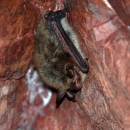
When reviewing recovery permit applications for gray bat (Myotis grisescens), Indiana bat (Myotis sodalis), northern long-eared bat (Myotis septentrionalis), Virginia big-eared bat (Corynorhinus townsendii virginianus), Ozark big-eared bat (Corynorhinus townsendii ingens), and the tricolored bat (Perimyotis subflavus) – we (the Service) assess an applicant’s qualifications to conduct the activities requested. This includes, but may not be limited to, the applicant’s ability to correctly identify the target species, as well as existing experience with and ability to properly conduct the requested activities. This document provides advice to applicants on the type of information to include with their application to demonstrate and document their qualifications.
Other useful links:
Recommended DNA Sampling Methods for Bat Species Identification







